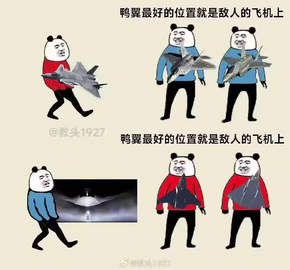6th Generation Fighters Projects
- Thread starter Sandhi Yudha
- Start date
On the heels of the F-47 NGAD announcement the US is expected to announce its decision on the F/A-xx program this week. The decision looks like it will come down to Boeing or Northrop Grumman.

 www.twz.com
www.twz.com

Navy F/A-XX Stealth Fighter Selection This Week: Report
The Navy is reportedly set to follow the Air Force’s lead and name the company chosen to develop and build its carrier-based sixth-generation fighter. The Navy is reportedly set to follow the Air Force’s lead and name the company chosen to develop and build its carrier-based sixth-generation...
Ananda
The Bunker Group
- YouTube
Enjoy the videos and music you love, upload original content, and share it all with friends, family, and the world on YouTube.
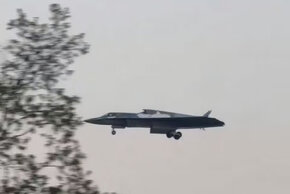
Some guy put in Weibo then later on circulate on online media. This is quite clear picture of China J36 approaching landing. Seems despite China told their enthusiasts to tone down put close video on the supposedly still secretive assets, some still doing it.
Last edited:
Bhartiya sainik
Member
Some 3D artist imagined & made 3D model & animation of F-47, whose fuselage looks like F/A-XX concept, upward tilted wings remind of Bird-of-Prey, engine bay hump reminds of YF-23.
So F-47 NGAD = F/A-XX + BoP + YF-23.

I'm putting a smaller collage as the images are huge, bigger than the collage.
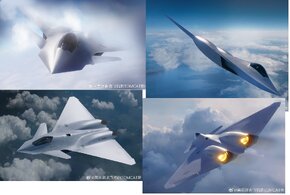
Some selected screenshots from animation showing specific angles to show airframe shape, parts:
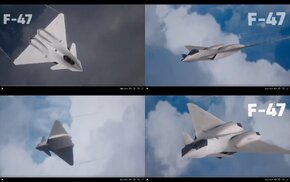
So F-47 NGAD = F/A-XX + BoP + YF-23.
I'm putting a smaller collage as the images are huge, bigger than the collage.

Some selected screenshots from animation showing specific angles to show airframe shape, parts:

John Fedup
The Bunker Group
Stealth canards, so stealthy they can't be photo/videoed...did Trump fail to mention that??View attachment 52550
Chinese meme about the F-47 illustrations.
If the F-47 does end up having canards, then I am a very happy man. Canard Supremacy!!!
Terran
Well-Known Member
The image released was a CGI and it does show Canards. However that release followed the same course as other US and European projects where they would release a CGI render upon contract unlike in 2000 when they gave us a whole documentary about the project.Stealth canards, so stealthy they can't be photo/videoed...did Trump fail to mention that??
Now personally I think mustaches look good on pilots not on Aircraft. However the meme…
The Canards issue it the joint between the Fuselage and the Canard. It’s the same issue as on a horizontal stabilizer on a jet like F22 or F35 they also create a problem point for radar return. The difference is where the joint is located. To be seen on a Canard fighter it’s right up front. If the radar is nose on there it is.View attachment 52550
Chinese meme about the F-47 illustrations.
If the F-47 does end up having canards, then I am a very happy man. Canard Supremacy!!!
on the Horizontal stabilizer it’s from the 6 O’clock. So from the nose the Wing root is in the way.
However we are now in the Year of our lord 2025. F35 is 20 years old and F22 is 30 and J20 is 15. In between then and now has been a lot of potential to solve this problem for F47. Boeing and NASA spent the last 1.5 decades working on morphing aerodynamic control surfaces. A technology that could eliminate the seem between the fuselage and the canard. Still… I wish it had a pelican tail rather than a mustache.
Bhartiya sainik
Member
Ultimately the final RCS return matters using geometry + RAS + RAM + EW. It is a collective effort of different aspects. F-22 has big rudders but still its frontal RCS is lowest. So we can imagine its rudders removed & positioned as canard. The joint/edges b/w fuselage & any control surfaces (rudder, slat, stab, canard) are already slanted/tapered from both sides.The image released was a CGI and it does show Canards. However that release followed the same course as other US and European projects where they would release a CGI render upon contract unlike in 2000 when they gave us a whole documentary about the project.
Now personally I think mustaches look good on pilots not on Aircraft. However the meme…
The Canards issue it the joint between the Fuselage and the Canard. It’s the same issue as on a horizontal stabilizer on a jet like F22 or F35 they also create a problem point for radar return. The difference is where the joint is located. To be seen on a Canard fighter it’s right up front. If the radar is nose on there it is.
on the Horizontal stabilizer it’s from the 6 O’clock. So from the nose the Wing root is in the way.
However we are now in the Year of our lord 2025. F35 is 20 years old and F22 is 30 and J20 is 15. In between then and now has been a lot of potential to solve this problem for F47. Boeing and NASA spent the last 1.5 decades working on morphing aerodynamic control surfaces. A technology that could eliminate the seem between the fuselage and the canard. Still… I wish it had a pelican tail rather than a mustache.
The following is example of F-22's slats allignment with wing root.
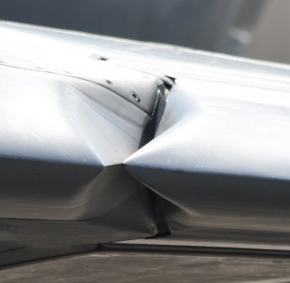
For 4gen jets it mattered a lot as they don't use RAS, RAM, geometry. their MLUed 4.5gen uses limitedly as the airframe design is obsolete.
Bhartiya sainik
Member
Another artist's good imagination:
> This is tandem tri-plane, but putting canard just in front of intake could obstruct airflow, unless onlyouter 2/3rd or half of canard moves.
> Bcoz of darkened flag in poster, some people are still speculating small all-moving rudders.
> Like Bird-of-Prey the wing can still be slightly tilted up with with drooped winglet, but He forgot to allign the bend-axis longitudinally parallel to length. Such wing adds to stability while a fighter needs to be unstable for agility.
> Such platipus like flatter nose could mean lesser pitch agility & little more RCS return by nose.
> Overall this looks like 1 engine exportable jet. I wonder how in Trump's words "nothing even comes close from speed to maneuverability to payload" & this is "most advanced, capable, lethal".
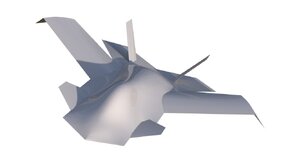
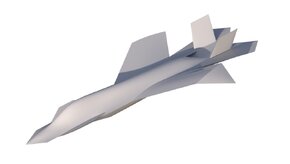
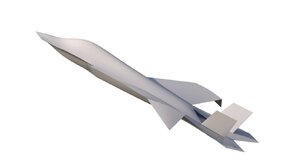
> This is tandem tri-plane, but putting canard just in front of intake could obstruct airflow, unless onlyouter 2/3rd or half of canard moves.
> Bcoz of darkened flag in poster, some people are still speculating small all-moving rudders.
> Like Bird-of-Prey the wing can still be slightly tilted up with with drooped winglet, but He forgot to allign the bend-axis longitudinally parallel to length. Such wing adds to stability while a fighter needs to be unstable for agility.
> Such platipus like flatter nose could mean lesser pitch agility & little more RCS return by nose.
> Overall this looks like 1 engine exportable jet. I wonder how in Trump's words "nothing even comes close from speed to maneuverability to payload" & this is "most advanced, capable, lethal".



Bhartiya sainik
Member
Another artist imagines F-47 little longer, dihedral wing with anhedral winglet.
The wing root is shifted back & intakes are also much behind, not enough space for serpentine duct, so engine would be visible.
Engine bays are apart & middle space filled like in Su-57, so might have tandem IWBs.
Perfect side, front, bottom images not available.

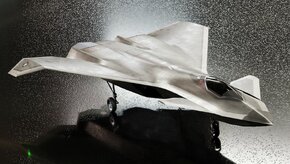
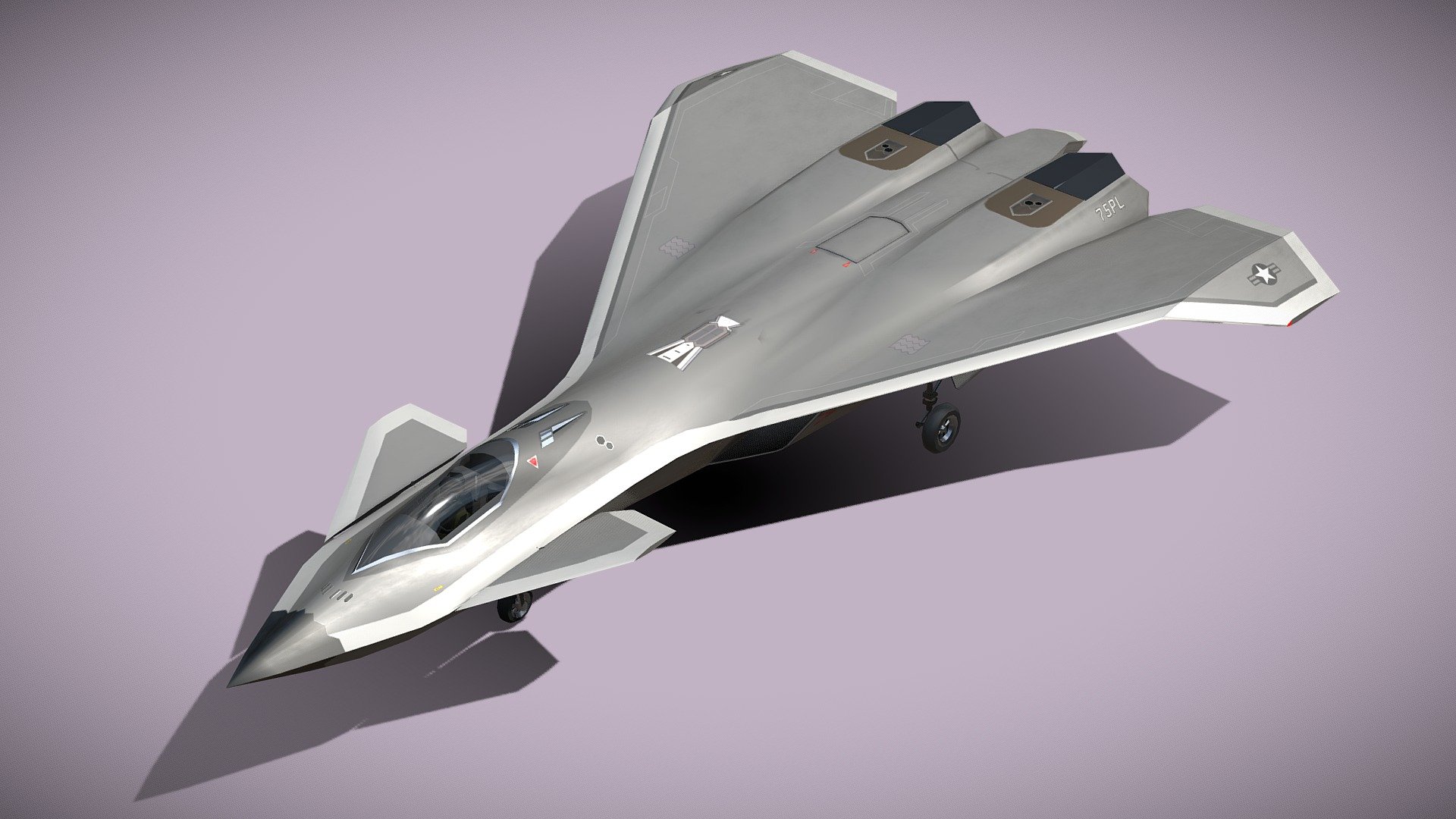
 sketchfab.com
sketchfab.com
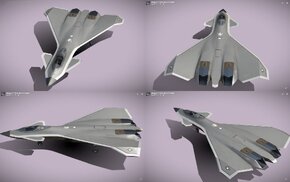
The wing root is shifted back & intakes are also much behind, not enough space for serpentine duct, so engine would be visible.
Engine bays are apart & middle space filled like in Su-57, so might have tandem IWBs.
Perfect side, front, bottom images not available.

Boeing F-47 Thunderstorm NGAD fighter | Galleries | Vehicle
6thgen | boeing | f-47 | fighter | jet | ngad | stealth | supersonic | thunderstorm
www.cgtrader.com


Boeing F-47 Thunderstorm NGAD - 3D model by NETRUNNER_pl
Boeing F-47 Thunderstorm NGAD Lowpoly model of new concept american stealth fighter The Boeing F-47 is a 6-generation fighter aircraft developed for the U.S. Air Force under the Next Generation Air Dominance (NGAD) program. It’s designed to succeed the F-22 Raptor, with enhanced stealth...

Bhartiya sainik
Member
Some 3D artist imagined & made 3D model & animation of F-47, whose fuselage looks like F/A-XX concept, upward tilted wings remind of Bird-of-Prey, engine bay hump reminds of YF-23.
So F-47 NGAD = F/A-XX + BoP + YF-23.
I'm putting a smaller collage as the images are huge, bigger than the collage.
View attachment 52547
Some selected screenshots from animation showing specific angles to show airframe shape, parts:
View attachment 52548
The artist has updated a modified version w/o canard stating that USN doesn't wan't canards.
Well, this is opposite expectation if USAF wants canards but not USN bcoz the wing leading edge has high sweep angle means higher landing speed w/o canard.
I'm posting a collage again as the images are huge.
> Perhaps the nose & chine need more blending like in Rodrigo Avellas F/A-X concept for bigger & wider coverage radar.
> Wings have been made little Lambda style than Delta earlier.
> There doesn't seem to be any winglet.
> Intakes have DSI. The intake lower edge is ahead of upper edge (blended with wing root). This can be a problem if high AoA & tight turn is desired as some air can slip out over wing causing insufficient air flow & compressor stall. Giving aux-intakes below or moving lip like in EF-2000 would increase complexity & RCS.
> Parallel IWB not tandem & SWB have been marked.
> Engine bays quite far separated, the duct may not be serpentine enough, engine would be visible.
> Exhaust look like that of YF-23 w/o TVC.
It seems that this is going to become a standard look of all 6gen jets.
Blame game already started on who's copying whom.
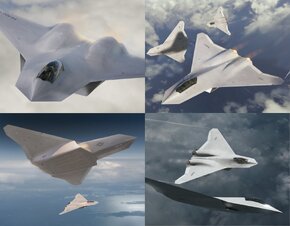
I am still confused about which of the two aircraft is J-36, the delta one or the swept-back wing one?- YouTube
Enjoy the videos and music you love, upload original content, and share it all with friends, family, and the world on YouTube.youtube.com
View attachment 52549
Some guy put in Weibo then later on circulate on online media. This is quite clear picture of China J36 approaching landing. Seems despite China told their enthusiasts to tone down put close video on the supposedly still secretive assets, some still doing it.
Ananda
The Bunker Group
According Deino's account and reading some comment in Weibo, it is the Delta one with 3 engine. I'm bit confuse on the talk of Swept-Back wing one, however if you refer on the photo and video, both the video and photo is from same plane. The photo taken from video using frame on 14 to 15 seconds.
Last edited:
Terran
Well-Known Member
On Mao’s birthday the PRC debut three aircraft one was their big AWACS based off the Y20 transport. One was their J36 and the last one was the J50.According Deino's account and reading some comment in Weibo, it is the Delta one with 3 engine. I'm bit confuse on the talk of Swept-Back wing one, however if you refer on the photo and video, both the video and photo is from same plane. The photo taken from video using frame on 14 to 15 seconds.
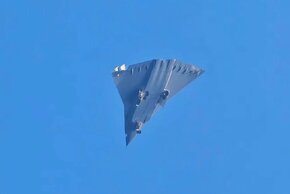
image source Wikipedia
The Chengdu J36 is technically a diamond wing with three engines based on estimates it’s 22 m long 24 m wide it seems like it would be close to early concepts of the USAF NGAD. Basically a very low observable B1R. A flying stealth long range missile launcher with a very long range a potentially a good size radar but not much else.
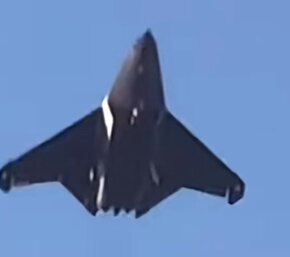
Image source https://x.com/nex_def/status/1874485310765347067
The Shenyang J50 is a Lambda wing configuration with twin engines. In concept closer potential to F47. An actual air superiority fighter. It’s 22m x22m however the Lambda wing means a smaller potential fuel capacity by wing volume and it’s a twin engine which if the same engines as the J36 then less power. However also less weight and likely a better maneuvering machine.
Based on both designations and the fact that J20 is still in production as well as Shenyang just having announced J35 production I suspect that the J36 has the priority for production well Shenyang will be back burner for a while, but despite the Little pink braggers. Neither is in production nor ready for it. J50 is probably the real “sixth generation” concept we’ll J36 is the next step in expanding the range of Chinese fighter operations beyond the first island chain.
Last edited:
John Fedup
The Bunker Group
There were reports last week that the USN 6th gen winner would be announced, fake news I guess.
Ananda
The Bunker Group
I suspect that even J36 is also prototype as prove of concept. 3 engines shown that even China WS-15 is not good enough yet for the size. WS-15 is more or less equivalent to AL-41 that powered Su-35 and not yet equivalent to AL-51 which is designated engine for Su-57.
Thus China still not really ready for 5th Gen Engine let alone 6th Gen. However seems they are now working on to the airframes concept and perhaps the avionics. The engine later on seems follow.
Thus China still not really ready for 5th Gen Engine let alone 6th Gen. However seems they are now working on to the airframes concept and perhaps the avionics. The engine later on seems follow.
Bhartiya sainik
Member
For common people like us it can actually be a big headache to imagine & estimate a new jet in 2D, unless we know how to use 3D CAD S/w.
to imagine & estimate a new jet in 2D, unless we know how to use 3D CAD S/w.
Most 3D artists also make models w/o thinking too much themselves.
Let's take F-22 as foundation reference.
If we wan't a better TE jet as per 6gen features of more capacity of weapons, fuel, new components, then it'll be bigger. So if the size/volume/weight is more & if same or more dry/wet ATWR (Airframe Thrust to Weight Ratio) needs to be maintained, then more airframe weight -> more thrust -> more air -> more area of intake, duct & inlet.
For idea, F-22's F119 Vs F-35's F-135 engines: 100cm Vs 109cm inlet dia., 116/128 KN Vs 156/191 KN dry/wet thrust. 9% more inlet dia., almost 19% more area, 10.3% more dry thrust, 22.4% more wet thrust.
There is no fixed formula b/w area of intake/duct/inlet & thrust, let's assume 1:1 ratio in increase for easy understanding. So if we fit F-22 with a bigger & 33% better engine of 156*1.33= 207.5 KN, the challenges are -
- increase air flow by 33%, means increase area of intake, duct & inlet by 33%. Inlet diameter increases by square-root(1.33) times or 15.32%.
- increase payload & range, means lengthen the jet.
- restrict airframe volume to 133%.
- restrict airframe height to that of F-22 if possible.
If the airframe expands only in width & height then it is easy to estimate.
If the airframe expands in all 3 XYZ axis in same ratio then also it is easy to estimate.
But if all 3 axis have different ratios then we have to be careful not to eceed new volume/weight.
Option 1 - stretch the airframe length only by 33%, which will need tandem IWB for extra AAMs.
Option 2 - stretch the airframe width only by 33%, which can adjust 4 more AAMs easily.
Option 3 - stretch both airframe width & length by ratio such that X*Y=1.33, like 1.1*1.2 or 10% X 20%.
Exploring option-1 1st, the fuselage width remains same, area of intake, duct & engine increased, again there are 3 sub-options:
1A - expand area in width & height by 15.32%, engine can be pushed down, but intake slightly portrudes down & out, duct above IWB is manageable.
1B - expand area in height only by 33%, engine can be pushed down, but intake portrudes down more & duct above IWB produces bump.
1C - expand area in width only by 33%, engine is pushed down, intake portrudes out sideways but manageable, duct above IWB is manageable.
I don't have 3D CAD S/w, so I put the above options 3 sub-options in approximate cross section diagrams of F-22:
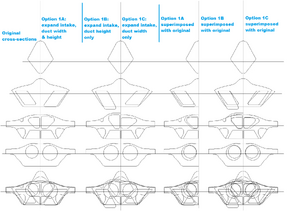
So we see that increased size/volume of 1 or some components or system affects other parts & entire airframe.
The engine power, size, weight is dictating design of stealth jet if same ATWR has to be maintained.
Most 3D artists also make models w/o thinking too much themselves.
Let's take F-22 as foundation reference.
If we wan't a better TE jet as per 6gen features of more capacity of weapons, fuel, new components, then it'll be bigger. So if the size/volume/weight is more & if same or more dry/wet ATWR (Airframe Thrust to Weight Ratio) needs to be maintained, then more airframe weight -> more thrust -> more air -> more area of intake, duct & inlet.
For idea, F-22's F119 Vs F-35's F-135 engines: 100cm Vs 109cm inlet dia., 116/128 KN Vs 156/191 KN dry/wet thrust. 9% more inlet dia., almost 19% more area, 10.3% more dry thrust, 22.4% more wet thrust.
There is no fixed formula b/w area of intake/duct/inlet & thrust, let's assume 1:1 ratio in increase for easy understanding. So if we fit F-22 with a bigger & 33% better engine of 156*1.33= 207.5 KN, the challenges are -
- increase air flow by 33%, means increase area of intake, duct & inlet by 33%. Inlet diameter increases by square-root(1.33) times or 15.32%.
- increase payload & range, means lengthen the jet.
- restrict airframe volume to 133%.
- restrict airframe height to that of F-22 if possible.
If the airframe expands only in width & height then it is easy to estimate.
If the airframe expands in all 3 XYZ axis in same ratio then also it is easy to estimate.
But if all 3 axis have different ratios then we have to be careful not to eceed new volume/weight.
Option 1 - stretch the airframe length only by 33%, which will need tandem IWB for extra AAMs.
Option 2 - stretch the airframe width only by 33%, which can adjust 4 more AAMs easily.
Option 3 - stretch both airframe width & length by ratio such that X*Y=1.33, like 1.1*1.2 or 10% X 20%.
Exploring option-1 1st, the fuselage width remains same, area of intake, duct & engine increased, again there are 3 sub-options:
1A - expand area in width & height by 15.32%, engine can be pushed down, but intake slightly portrudes down & out, duct above IWB is manageable.
1B - expand area in height only by 33%, engine can be pushed down, but intake portrudes down more & duct above IWB produces bump.
1C - expand area in width only by 33%, engine is pushed down, intake portrudes out sideways but manageable, duct above IWB is manageable.
I don't have 3D CAD S/w, so I put the above options 3 sub-options in approximate cross section diagrams of F-22:

So we see that increased size/volume of 1 or some components or system affects other parts & entire airframe.
The engine power, size, weight is dictating design of stealth jet if same ATWR has to be maintained.



